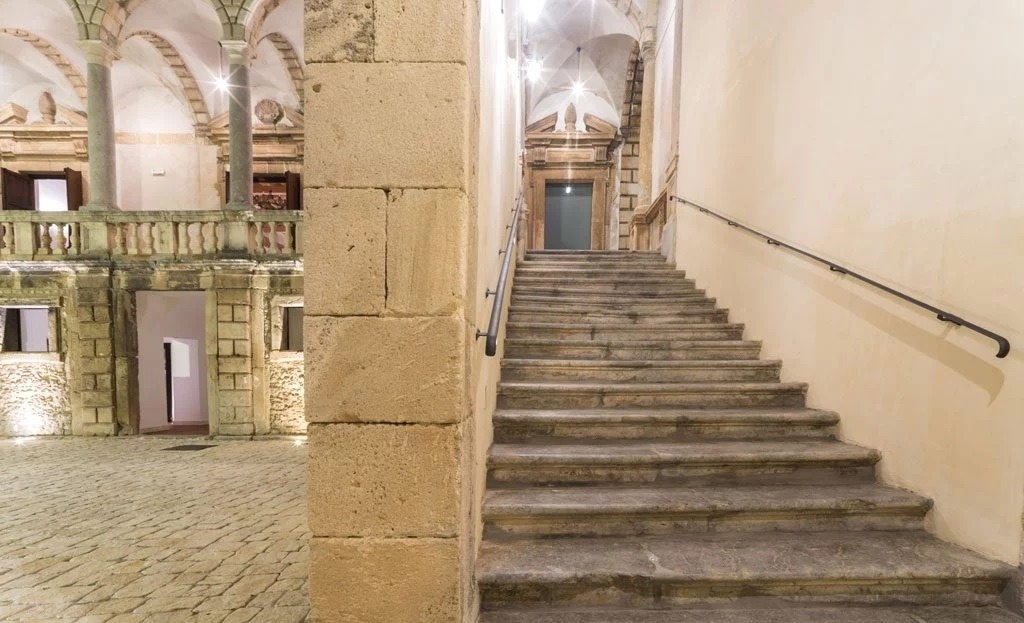Castello di Roccavaldina: A Historic Fortress in Sicily, Italy
Visitor Information
Google Rating: 4.4
Popularity: Low
Google Maps: View on Google Maps
Official Website: www.ilcastellodiroccavaldina.com
Country: Italy
Civilization: Unclassified
Remains: Military
History
The Castello di Roccavaldina stands in the municipality of Roccavaldina, Italy, on a site originally occupied by a Roman establishment. This location was first developed around 260 BCE as a station known as Pagus Lavina, which served as a mandatory stopping point for changing horses during long-distance travel.
During the period when Byzantine and Arab forces contested Sicily, the Roman stop station was fortified to withstand frequent raids. Around 840 CE, Saracen forces besieged and took control of this settlement, renaming it Raakal Elmerun. From this base, they conducted a prolonged three-year siege against the nearby Byzantine fortress at Rometta.
Following the Norman conquest of Sicily led by Roger I of Hauteville after 1060 CE, the territory came under the control of the Benedictine monastery of Santa Maria la Scala. The earliest recorded reference to Roccavaldina itself appears in papal documents dated to 1090, in which the locale was identified as an archpriestship subordinate to the archbishop of Messina.
By the late 13th century, the site is documented under the ownership of Giovanni Rocca, a noble knight from Pisa, marking the beginning of a succession of noble families managing the feudal domain. Subsequent proprietors included the Perroni di Gioeni family, Niccolò Castagna, who held positions as Treasurer and Viceroy of Sicily, and later the Valdina lineage.
In the 1500s, the castle underwent a transformation from a straightforward defensive structure into a more elaborate baronial fortress serving as the noble residence of the Valdina family. Pietro Valdina was granted noble titles by King Philip IV of Spain in 1623, becoming the first Prince of Valdina and Marquis of the domain. Enhancements during this period included architectural additions commissioned from Camillo Camilliani, a student of Michelangelo, who introduced features such as an elegant courtyard, a marble loggia, a grand staircase, spacious halls, and a panoramic terrace that harmonized Renaissance-Baroque elements with the older Norman-Swabian fortifications. Architect Jacopo del Duca also likely contributed to the design of these upgrades.
The castle later hosted significant figures such as the painter Caravaggio and artist Alonso Rodriguez during their stays, suggesting its importance as a cultural center.
The 1908 earthquake that devastated the Messina area caused substantial damage to the older parts of the castle. Restoration efforts in the 1960s, led by Vittorio Nastasi De Spucches, focused on structural repairs and the restoration of key features like the 17th-century loggia and main entrance portal. In 1966, the Italian Ministry formally recognized the castle as a monument of particular historical importance. Further conservation work in 2000, carried out by Francesca Nastasi De Spucches, preserved important exterior sides of the building to ensure its endurance.
Remains
The Castello di Roccavaldina is characterized by a quadrangular layout, elongated along a north-south axis, with four façades roughly aligned with the cardinal directions. The fortress presents a layering of historical construction styles, reflecting its continuous adaptation over many centuries.
The oldest section lies on the northern façade, which faces Piazza del Popolo and stands opposite the hill supporting the Cathedral of San Nicolò. This side dates back to the Norman-Swabian era and consists of a medieval curtain wall constructed using large cut stone blocks known as ashlar. Two fortified towers, topped with battlements of the Guelph type—characterized by their rectangular merlons—flank this wall. The main entrance is marked by a pointed arch made of finely dressed stone, signifying medieval defensive design.
To the east and south, the façades provide expansive views over the Peloritani mountains. The southern side is notable for overlooking the Nebrodi mountain range and landmarks such as Mount Etna, as well as scenic vistas across the Gulf of Milazzo and the Gulf of Patti. A sizeable terrace rises above Piazza Lea and its fountain on this side, featuring a monumental corner balcony on the left which highlights the blend of residential comfort and strategic outlook typical of later castle modifications.
The western façade faces the Tyrrhenian Sea and the Aeolian Islands and is distinguished by battlements of the Ghibelline style, which have swallowtail-shaped merlons giving a distinctive silhouette. This side includes the marble loggia with five arches, an architectural feature serving as a covered gallery open to the outdoors, and a series of balconies attached to rooms in the western wing. These elements link the defensive structure with Renaissance-Baroque decorative aspects introduced during the Valdina family’s tenure.
A particularly striking feature is the grand staircase leading from the courtyard of the original fortress up to the enhanced reception rooms in the baronial palace. This staircase, together with the marble loggia, presents a Florentine stylistic influence rarely found in Sicilian castles, emphasizing both aesthetic refinement and spatial transition from medieval to early modern architectural periods.
Today, the castle is privately owned. The preserved parts reflect centuries of adaptations, with several restorations safeguarding the original Norman-Swabian fortifications alongside Renaissance and Baroque additions. The combination of medieval military architecture and later residential enhancements provides a layered testament to the site’s long and varied history.










